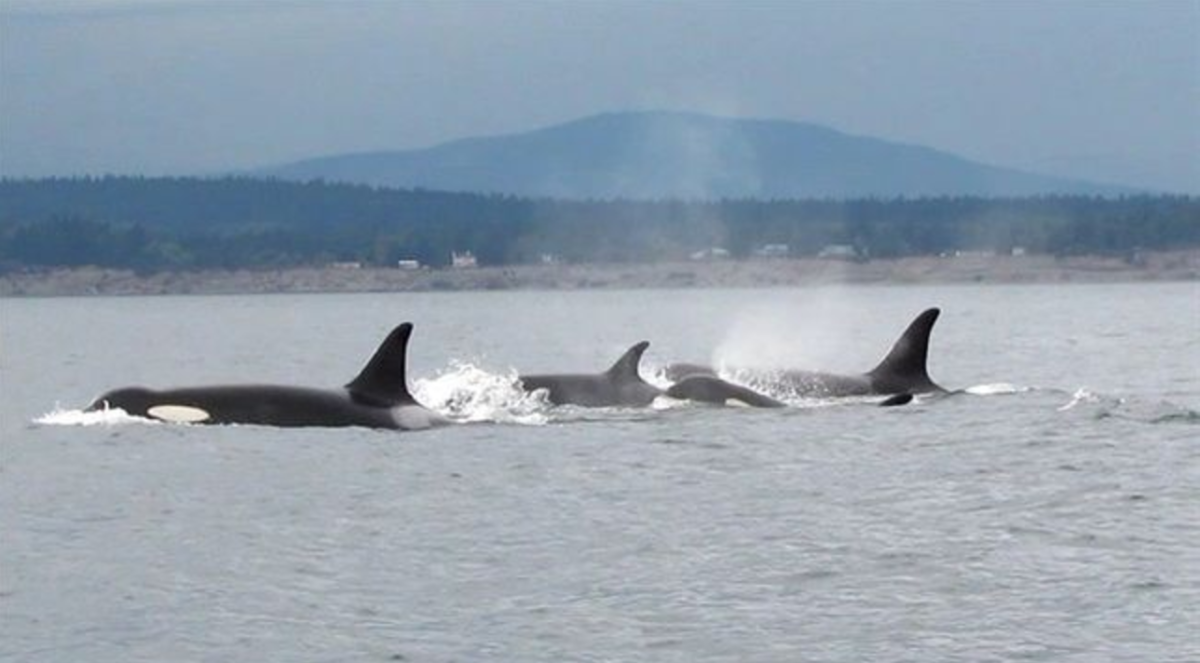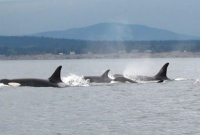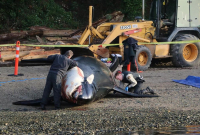Two of British Columbia’s most iconic species, chinook salmon and southern resident killer whales, are in trouble. The whale depends on the salmon for survival. Is it time to manage chinook fisheries with killer whales in mind?
In marine ecosystems, cause and effect is a challenge. It’s almost impossible to claim with certainty that depletion of one species is caused by abundance or lack of another. The general rule is that big things eat smaller things, so any given species will eat dozens of others, even their smaller kin.
The southern resident killer whales, also known as orcas, are an exception. Despite their immense intelligence, or perhaps because of it, their diet consists almost entirely of chinook salmon, with only traces of other salmon, and virtually no other fish species. The endangered whales are seen from spring through fall searching for their preferred prey in the waters of the Salish Sea, and between the San Juan Islands in Washington State and the Gulf Islands in B.C.
Save the salmon, save the whales
Every killer whale population has its own unique culture, which includes language, social behaviours and dietary preferences. A large male weighs nearly as much as two Ford 150 pickup trucks. Sustaining this mass of warm-blooded flesh in a cold ocean requires using echolocation to find and capture fish in the darkness. Understanding the patterns of their chinook prey is a highly specialized activity passed on through generations of learned behaviour.
After each capture, an orca normally shares the fish with the pod. That’s remarkable considering the whale could practically swallow the prey whole. If the 78 southern resident killer whales that remain in our oceans are to survive, this cultural feeding ritual needs to occur about 1,400 times a day. That’s become difficult, as chinook salmon populations that migrate through waters where the southern resident killer whales feed are severely depleted, and the fish are smaller on average than they once were.
Fisheries and Oceans Canada’s assessments show most chinook populations in southern B.C. are well below historical levels and continue to decline. In November 2018, the Committee on the Status of Endangered Wildlife in Canada will determine the status of several populations, and will likely declare many endangered.
Fishing is not the only threat chinook face, but it has a major impact. Fishing tends to target salmon as they return to spawn — after they’ve survived, against all odds, through 99 per cent of their expected lives. Those that spawn hold the genetic blueprint to help their offspring withstand current environmental conditions. With far fewer chinook making it to spawning grounds, each survivor is a critical contributor to the next generation. Estimates show commercial and sport fisheries in British Columbia took more than half a million chinook in 2016. For some chinook populations, people harvest well over half the returning fish.

Creating a recovery strategy
Noise from shipping also hinders the whales’ ability to communicate with each other, find prey and avoid danger — by up to 97 per cent in the noisiest areas. Commercial shipping has increased dramatically in recent years. One large ship transits the Salish Sea, on average, every hour of every day of every year.
Federal whale biologists have identified a priority recovery strategy: create refuges where orcas can feed without competition from fisheries and that are quiet enough that echolocation is not masked and social behaviours aren’t disrupted. These areas are currently being identified and could be established within killer whale critical habitat areas. Many other issues, including pollution, must also be addressed.
Rebuilding chinook populations is critical to rebuilding whale populations, yet there are no recovery plans to increase chinook populations to upper benchmarks, as required by Canada’s Wild Salmon Policy. More than 300,000 recreational fishing licences are issued annually in B.C., which creates a formidable competitor to killer whales. Like whales, humans have also learned over generations about the behaviour of their prey.
The federal government is undertaking a scientific review to prioritize killer whale recovery actions. Part of this process involves public consultation. Anyone concerned about orcas should contribute.
Understanding the importance of chinook to killer whales makes it difficult to justify catching them without considering the whales’ needs. The complexity of marine ecosystems makes it easy for individuals to point fingers to the myriad other threats such as climate change and habitat destruction. But we must recognize that, collectively, our habits have become destructive to the environment and other species.
The fate of two of British Columbia’s most iconic animals and the ecosystems and economies that depend on them rests in our hands.
— Written with contributions from David Suzuki Foundation senior research scientist Scott Wallace.






Comments
Chinook feed on herring. So do a lot of other fish species. The inane practice of over harvesting our herring populations, and their roe, by both commercial and first nations fisheries in the Salish Sea needs to have a five-year moratorium.
Then the Chinook will return. And then while we're at it, get the disease spreading fish farms to shut down as well. Its moronic.
And please, can we start implementing the Cohen Commission's recommendations? How many years has it been?